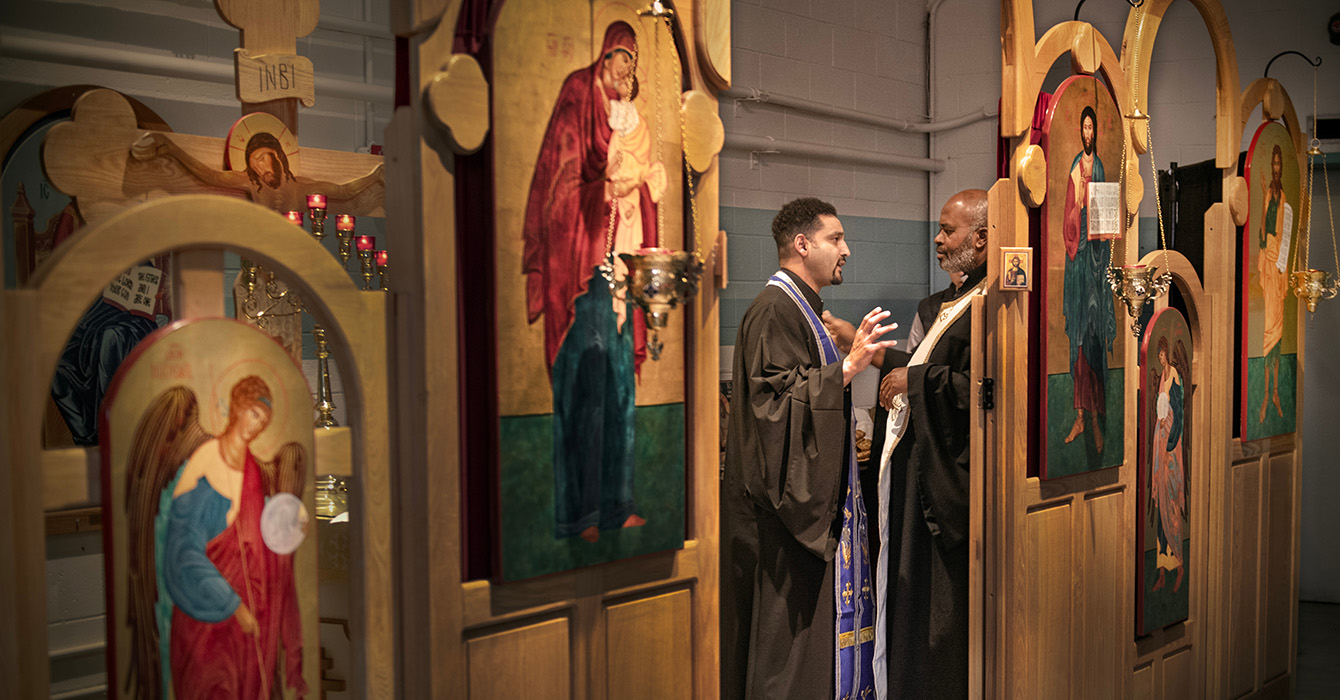When siblings play in the mud, invent imaginary worlds, write sonnets, sew costumes or shoot baskets together, they develop camaraderie.
Child psychologists suggest that siblings who learn to appreciate and enjoy each other are poised for a good lifetime relationship. Siblings who treat each other as real people, as they might a classmate or a kid in the neighborhood, have the best chance at getting along.
Brothers and sisters are bound to bicker, but in order for their relationship to thrive, they need to learn to be friends.
For much of the church’s history, this line of reasoning has been nearly lost on Western Christians. Entangling Christian mission with empire building and conquest, Western Christians have often failed to relate to people they encounter around the world as equals. Tellingly, the metaphor describing relationships among Christians has been of “mother” churches in Europe and North America supporting “daughter” churches in Africa, Latin America and Asia.
Over the last several decades, a new paradigm has emerged to challenge the “sending” model of mission, in which one party’s role is to give and the other’s is to receive.
Proponents of the new paradigm envision mission as an extension of God’s reconciling errand to the world. They see mission not as unidirectional but as flowing “from everywhere to everywhere.”
The “sister church” model of mission, in which two congregations from different regions of the world partner with each other for the sake of mutual ministry, grows out of this new paradigm. Since the early 1980s, and especially in the last decade, a significant number of North American congregations representing virtually all Christian traditions have forged long-term relationships with congregations in the global South.
To learn about sister church relationships from a North American vantage point, I conducted ethnographic research among 12 congregations from across the spectrum of Christianity in the Washington, D.C., area. Each of these congregations was involved in a partnership with a Latin American, African or Caribbean congregation. I also interviewed representatives from denominational agencies and parachurch organizations; this research is the basis of my book “Sister Churches: American Congregations and Their Partners Abroad.”
As I learned in my research, the sibling metaphor for international congregational relationships is carefully chosen. Rejecting hierarchies associated with parent-child relationships, participants hold on to the familial metaphor -- which has a long history in Christianity -- by labeling partner churches as siblings, “sisters” in the family of God.
However, just as merely having a sister doesn’t mean you have a good sibling relationship, so too merely having a sister church does not automatically entail a good sister church relationship.
Like bad sibling relationships, unhealthy sister church relationships can be dominated by conflict, with patterns of bad behavior on both sides. But even with good intentions, I’ve found, North American congregations in these relationships are especially prone to err.
Often, they give lip service to the idea of sharing power with their partners but “know better” when it comes to which curriculum to use, what color to paint the chapel and how to cook the rice.
They may generously finance projects but forget to ask their partners whether they even want a given project -- while making sure to ask for receipts.
Decision making is often ill-defined, or decisions are made unilaterally by the partner with greater capital. The wealthier partner either assumes that money is of no consequence or uses money to control the relationship.
Sometimes Northern partners use Southern partners as accessories to exotic experiences; Southern partners can use Northern partners as bank accounts.
North American participants may place their partners from the global South on a pedestal for being “beautiful” or “happy” despite abject poverty, or place them on a footstool for being “bad with money” or “unmotivated.”
Conversely, participants from Southern churches may elevate their Northern partners for connections to “the good life,” or look down on them for “decadence” or “individualism.”
In one of the relationships I studied, the American pastor, lacking confidence in the leaders of the partner congregation in Liberia, withdrew support for a joint initiative with the Liberian church and then privately employed a community member to carry out the project. Surprised when the leaders of the sister church expressed a sense of anger and betrayal, the pastor retorted that he was simply trying to “get things done.”
I also found examples of good sibling relationships, in which each partner congregation saw that they had something to learn from and something to give to the other. I found that clear communication, trust and fairness are all important parts of a healthy relationship between partners.
Disparities in power and resources are taken seriously in good relationships. Rather than denying their privileged position, established churches compensate for differences with more-vulnerable siblings. Significant conflict is handled openly, while insignificant conflict is forgotten. Responsibility for the relationship is shared, and congregations take turns initiating and responding.
Mediators, oftentimes bicultural, can help bridge cultural incongruities while encouraging celebration of each other’s uniqueness.
Projects arise out of relationships rather than the other way around, and relationships are valued more highly than projects. Transfers of material resources are handled carefully and discreetly. Decision-making processes are established jointly, and a shared understanding between partners develops surrounding expectations.
Partners with the deepest knowledge of the ministry setting are primarily responsible for making decisions about that ministry, no matter who supplies the funding.
In one sister church relationship I studied, American and Rwandan partners spent two years simply getting to know each other before initiating projects or transferring funds.
Later, when the Rwandan congregation asked the Americans to donate money for a dump truck for economic development, the congregation gave the money and blessed the Rwandan congregation’s plans, despite some misgivings about the project. Leaders of the American congregation put the health of the relationship over their perception of “being right” and were able to continue in a generative partnership.
In other words, the “sisters” were friends.
In the best relationships, I’ve observed that partners spend time together -- eating each other’s foods, singing each other’s songs, laughing at each other’s jokes, listening to each other’s stories. They maintain friendship through regular, ongoing contact.
When they can’t be together, they share liturgical art and prayer requests or send each other letters and photos. Partners listen without trying to change each other, and they are quick to learn but slow to teach. Respectful conflict is not only tolerated but welcomed as an opportunity for growth. Trust develops mutually -- each partner accountable to the other.
Despite many challenges, I believe that sister church relationships -- designed to foster mutuality across barriers as they take advantage of current flows of information and resources on a global scale -- are specially equipped for advancing Christian mission today.
Having participated in a partnership with a congregation in Tanzania, an American parishioner remarked in an interview, “Our relationship has humanized people on the other side of it, as I hope it has done for them with respect to us. It turns people from projects who are defined by a handful of attributes that are stereotypically associated with poverty into people who are like us in more ways than they are different.
“We have different situations but the same Lord, and fundamentally the same mission.”
Participants in this sister church partnership met each other in their humanity, and gained something precious by learning to treat each other as friends.








